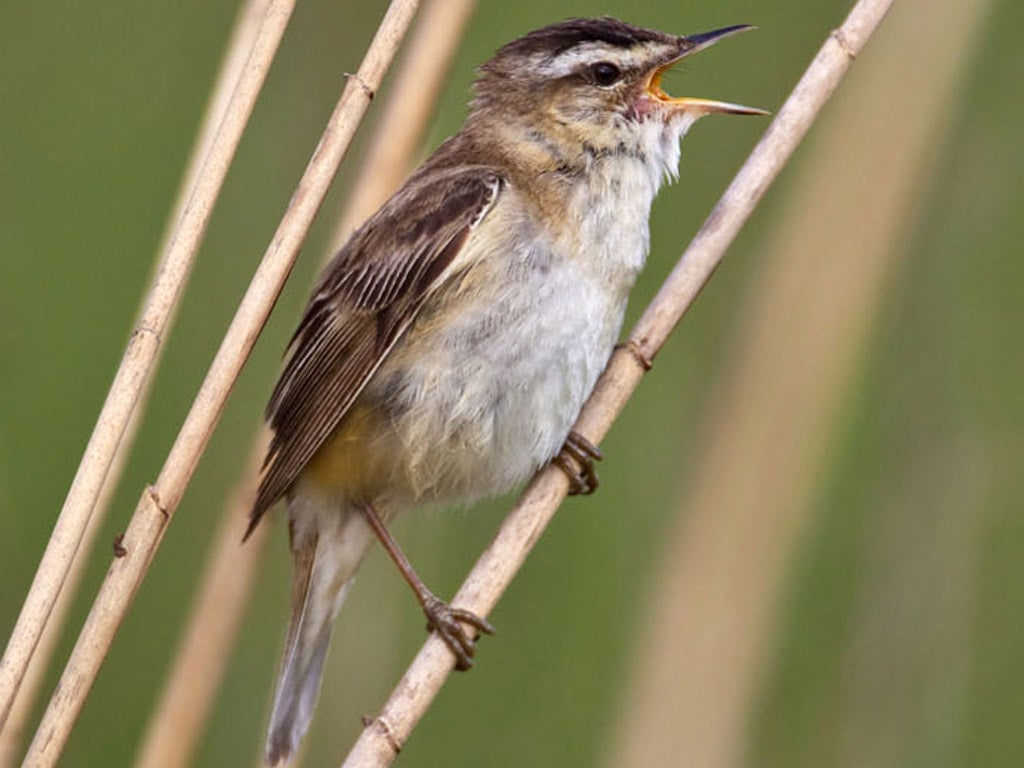Nature Studies by Michael McCarthy: From ants to birds to whales, there's a soundscape to be marvelled at
In nature's collective voice, we can locate the origins of human music, even language

When I first heard the term soundscape I was taken aback, because it perfectly described what I was listening to: a whole series of different warbler species singing heartily on a spring day in the Norfolk Broads. I was taken aback because I suddenly realised that they were not singing each in isolation, but as part of something bigger, a whole layer of aural existence of which I had been sublimely ignorant. You could look at the landscape; and at the same time, you could listen to the soundscape. There it was.
An extraordinarily skilled naturalist pointed it out to me, and changed forever my perception of birdsong, and even of the natural world. He showed me that remarkable events were taking place in sound right in front of us: a sedge warbler in a bramble patch was mimicking perfectly the calls of a range of other, quite dissimilar birds, from linnets to greenshanks, and was doing it to impress female sedge warblers and secure a mate: almost like a young man at a party with a guitar. I became aware that the sound all around us, and by extension, throughout nature, was not random squawks and tweets and whistles, not abstract background noise like the muzak in a hotel lift, but had meaning, and could be deconstructed and decoded, and that the whole was more than the sum of the parts.
It's a fairly new concept, the soundscape, "the concerto of the natural world." The term itself is usually credited to the Canadian composer and naturalist R Murray Schafer, but one man in particular has made it his life's work to explore it and to document it. Bernie Krause was a folk singer and session guitarist who became interested in electronic music in the San Francisco of the late 1960s – he was one of the first musicians to take up the synthesiser – but as the 60s became the 70s, he found himself more and more drawn to recording the sound array of nature.
Over 40 years he has archived the sounds of more than 15,000 species, from snapping shrimps to humpback whales, from ants singing to gibbons duetting at dawn, from corn growing to murmuring giraffes. He has created a vocabulary to help us understand the ensemble, as we might say. Geophony (which I think we should pronounce jeeoffanny) means natural sounds from non-biological sources such as wind and rain and earth movements: the first sounds on earth, and the context for sounds made by living creatures, which Krause terms biophony (again, I think we should say byeoffanny). And in contrast to them both is anthrophony (let's say anthroffanny) which covers the sounds made by human beings, and quickly becomes Noise with a capital N, and drowns out the others, just as our streetlights have come to obscure the stars.
Using such concepts, and also using sonograms, pictures of sound over time, Krause has elucidated the wonders of the soundscape, and wonders they are. Two discoveries stand out. The first is that every organism has a unique sound signature, no matter how minute: "When viruses let go from a surface they've been attached to, they create a detectable sonic spike." The second is that in nature's symphony, everything fits together: organisms have evolved to use unoccupied sound channels, of time, loudness, or frequency, so they do not drown each other out in a cacophony (Krause calls this "niche discrimination"); instead, they form a collective voice, "the acoustic harmony of the wild".
All this magnificent, if arcane, knowledge has now been brought together by Krause in a masterly tour of the soundscape. Entitled The Great Animal Orchestra (Profile Books, £12.99), it makes a convincing case for the soundscape's overlooked value, partly for itself, and partly as an indication of the health of the natural world, and for one overwhelming reason for us as humans: in nature's collective voice, he says, can be located the origins of human music, and perhaps even human language.
Now, though, it is threatened like so much else, and Krause ends with a plea: "The whisper of every leaf and creature implores us to love and care for the fragile tapestry of the biophony, which – after all – was the first music our species heard."
Cover your ears for this shrimp
Some animals, such as toothed whales like the sperm whale, Krause writes, can generate sound levels that, if produced in the air, "would be equivalent to a large-bore firearm being discharged a few inches from your ear."
However, the loudest organism in the animal world may be a creature right at the opposite end of the scale in terms of size: the inch-and-a-half long snapping shrimp, which can produce an explosive signal with its single large claw exceeding 200 decibels underwater, equivalent to about 165 decibels in the air.
By contrast, the Grateful Dead, sometimes thought of as the world's loudest rock band, come in at about 130 decibels.
Join our commenting forum
Join thought-provoking conversations, follow other Independent readers and see their replies
Comments